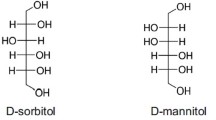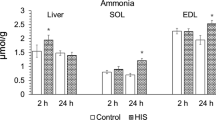Conclusions
We have attempted in dogs to parallel the effects of spontaneous gastro-intestinal hemorrhage by removing blood from the heart and placing it in the gastrointestinal tract with a stomach tube.
An extrarenal azotemia can be produced which is characterized by two rises in the blood urea value, the first at twelve to twenty-four hours, and the second forty-two to forty-eight hours after the beginning of the experiment.
When fasting and non-fasting animals are used and when one group loses blood only and the other is fed blood only, we can dissociate this double curve into its component factors. Thus, the initial rise is produced by the feeding of blood and the secondary rise is due to loss of blood. The initial rise takes place within twelve to twenty-four hours and the secondary rise forty-two to forty-eight hours after the onset of the experiment. Both elevated values fall within a very few hours (five to twelve) and both are accentuated if food of a high protein content is allowed.
Plasma chloride, and urea ratio determination values were probably not significantly altered in any experiment.
The blood urea rise is due to several factors, first to assimilation of the ingested protein and digestion products of the whole blood in the gastro-intestinal tract, and second to an increase in protein catabolism.
Hypochloremia, hemoconcentration and dehydration played no significant role in this form of extrarenal azotemia due to simulated gastric hemorrhage.
From what we have found in dogs, it is reasonable to assume that restoration of blood volume and efforts aimed to diminish the increase in protein catabolism should constitute ideal medical management of bleeding peptic ulcers. For the restoration of blood volume, drip transfusions could well be used. To diminish the increase in protein catabolism, one might give fluids with glucose and sodium chloride. We are attempting now to see if this actually does help.
Similar content being viewed by others
Bibliography
Buell, M. J.: Studies of Blood Regeneration. I. Effect of Hemorrhage on Alkaline Reserve.J. Biol. Chem., 40:29–61, 1919.
Folin, O. and Wu, H.: A System of Blood Analysis.J. Biol. Chem., 38:81–110, May, 1919.
Kaump, D. H. and Parsons, J. C.: Extrarenal Azotemia in Gastrointestinal Hemorrhage. I. General and Clinical Consideration.
Mosenthal, H. O. and Bruger, M.: Urea Ratio as a Measure of Renal Function.Arch. Int. Med., 55:411–419, March, 1935.
Osterberg, A. E. and Schmidt, E. V.: Estimation of Plasma Chlorides.J. Lab. and Clin. Med., 13:172–175, Nov., 1927.
Taylor, A. E. and Lewis, H. B.: A Study of the Protein Metabolism Under Conditions of Repeated Hemorrhage.J. Biol. Chem., 22:71- 75, 1915.
Van Slyke and Plazin: A Modification of Urease Decomposition of Whole Blood Followed by Nesslerization of Somogyi Blood Filtrate. Peters and Van Slyke, Vol. II, Methods. The Williams & Wilkins Company, pp. 558–559, May, 1932.
Wintrobe, M. D. and Landsberg, J. W.: Standardized Technique for Blood Sedimentation Test.Am. J. M. Sc., 189:102–115, Jan., 1935.
Author information
Authors and Affiliations
Rights and permissions
About this article
Cite this article
Kaump, D.H., Parsons, J.C. Extrarenal azotemia in gastro-intestinal hemorrhase. Jour. D. D. 7, 191–194 (1940). https://doi.org/10.1007/BF02997820
Received:
Issue Date:
DOI: https://doi.org/10.1007/BF02997820




